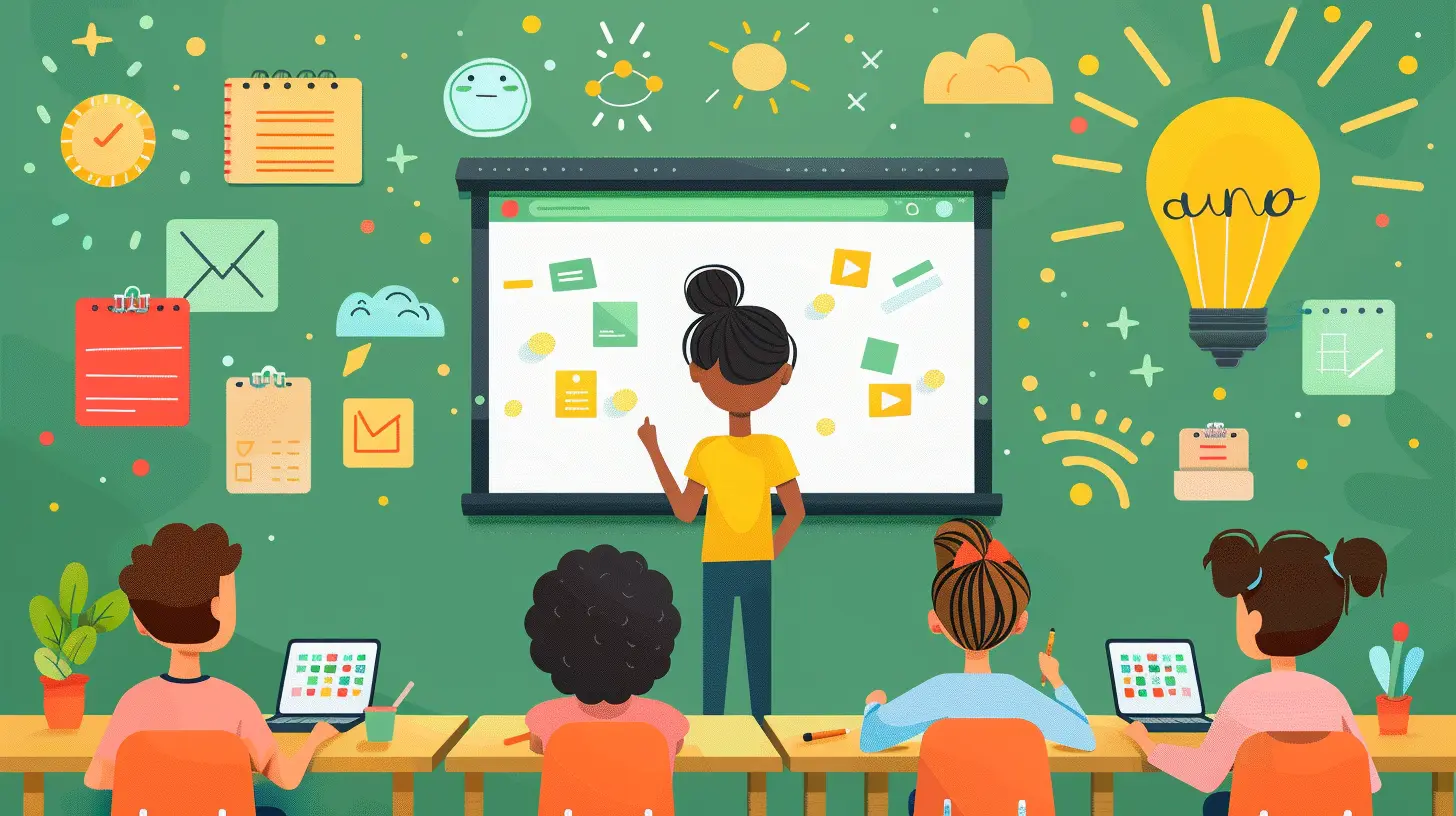How to Use Flipped Classroom Strategies for Professional Development
29 July 2025
Professional development is essential for career growth, but traditional learning methods don't always fit into our busy schedules. Enter the flipped classroom strategy—an innovative approach that puts learners in control of their education. While it's widely used in schools and universities, professionals can also leverage this method to enhance their skills and stay ahead in their fields.
But how does it work? And more importantly, how can you apply it to your own professional development? Let’s dive in! 
What is a Flipped Classroom?
A flipped classroom reverses the traditional learning model. Instead of receiving lectures in-person and then doing assignments later, learners engage with materials (videos, articles, podcasts) beforehand and use class time for discussions, problem-solving, and hands-on activities.In professional development, this means learning at your own pace before participating in workshops, training sessions, or peer discussions. You digest the content first, then use structured time for deeper insights and applications. 
Why Use Flipped Learning for Professional Development?
1. Flexible Learning
Let’s be honest—juggling work, personal life, and learning isn’t easy. Flipped learning lets you consume educational content when it suits you, whether it's during your morning commute or before bed.2. Active Participation
Instead of passively listening to a lecture, you arrive at training sessions ready to discuss and apply concepts. This makes learning more engaging and effective.3. Better Retention
Studies show that hands-on learning improves knowledge retention. Since flipped learning encourages application over memorization, you're more likely to remember what you've learned.4. Personalized Learning Experience
Not everyone learns at the same pace. With flipped learning, you can rewind, pause, or replay content as needed, giving you complete control over your learning journey.5. Encourages Collaboration
When professionals come together having already reviewed the material, discussions are deeper, questions are more insightful, and learning becomes a shared experience rather than a solo effort.
How to Implement Flipped Classroom Strategies for Professional Growth
If you're ready to reshape your learning experience, here’s how to apply flipped classroom techniques to your professional development.1. Identify Your Learning Goals
Before you dive into any training program, ask yourself:- What skills do I want to develop?
- What knowledge gaps do I need to fill?
- How will this benefit my career?
Having clear goals will help you choose the right resources and track your progress effectively.
2. Find the Right Learning Materials
Flipped learning relies on quality content that you can study before group discussions or training sessions. Consider:- Online courses (Udemy, Coursera, LinkedIn Learning)
- Webinars and recorded lectures
- Industry blogs and whitepapers
- Podcasts and audiobooks
Mixing different types of content keeps things fresh and prevents burnout.
3. Create a Learning Schedule
Since flipped learning is self-paced, it's easy to procrastinate. Avoid this by setting a structured schedule:- Dedicate specific times for self-study
- Break learning into small, manageable chunks
- Set deadlines for completing materials before group discussions
Consistency is key!
4. Engage in Discussions and Collaboration
Once you've studied the material, seek out opportunities to discuss and apply what you've learned:- Join peer study groups
- Participate in online forums and webinars
- Engage in Q&A sessions with industry experts
This reinforces your understanding and allows you to see different perspectives.
5. Apply What You’ve Learned
Knowledge without action is useless. Use real-world applications to solidify your learning:- Implement new skills into your daily work
- Take on small projects to test your knowledge
- Share insights with colleagues through presentations or blog posts
The more you apply what you learn, the more valuable it becomes.
6. Seek Feedback and Reflect
Learning doesn't stop after a course or discussion. Keep improving by:- Asking for feedback from mentors or peers
- Assessing your progress regularly
- Adjusting your learning approach if needed
Self-reflection helps you refine your strategies for continuous growth. 
Tips to Make Flipped Learning More Effective
1. Use Microlearning Techniques
Instead of consuming large chunks of information at once, break it down into short, focused lessons. This makes learning easier and more effective.2. Take Notes and Summarize
Writing down key takeaways improves retention. Try:- Bullet points for quick reference
- Diagrams and mind maps for visual learners
- Summaries in your own words to ensure understanding
3. Stay Accountable
Accountability keeps motivation high. Find a buddy or mentor to track progress together. Even posting your learning journey on LinkedIn can encourage consistency!4. Choose Engaging Content
Let’s be real—boring content kills motivation. Pick interactive materials that use videos, infographics, case studies, and hands-on assignments to keep things interesting.5. Celebrate Small Wins
Learning takes time, so acknowledge your progress:- Finished a course? Treat yourself!
- Applied a new skill at work? Give yourself credit!
Celebrating small milestones keeps you motivated for the long run.
Real-World Applications of Flipped Learning in Professional Development
1. Corporate Training Programs
Companies are now using flipped learning models for employee training. Instead of lengthy in-person lectures, employees study materials beforehand and use training sessions for interactive discussions and practical exercises.2. Leadership Development
Aspiring leaders can use flipped learning to build management skills. Watching leadership case studies and analyzing them in group discussions helps develop critical thinking and problem-solving abilities.3. Skill-Based Certifications
Many professional certifications (e.g., PMP, Google Analytics, AWS) provide pre-study modules before live workshops, aligning perfectly with the flipped classroom approach.4. Industry Conferences and Webinars
Instead of sitting through long conference sessions, professionals can review materials in advance and use in-person events for networking, panel discussions, and hands-on exercises.Final Thoughts
The flipped classroom strategy isn’t just for students—it’s a game-changer for professional development, too. By taking control of your learning process, engaging in meaningful discussions, and applying knowledge in real-world scenarios, you can accelerate your career growth like never before.So why not flip your learning approach today? Your future self will thank you!
all images in this post were generated using AI tools
Category:
Flipped ClassroomAuthor:

Eva Barker
Discussion
rate this article
1 comments
Nadia Mitchell
Love this idea—engagement redefined!
August 7, 2025 at 5:01 AM

Eva Barker
Thank you! I'm glad you liked the idea—engagement is key in professional development!


